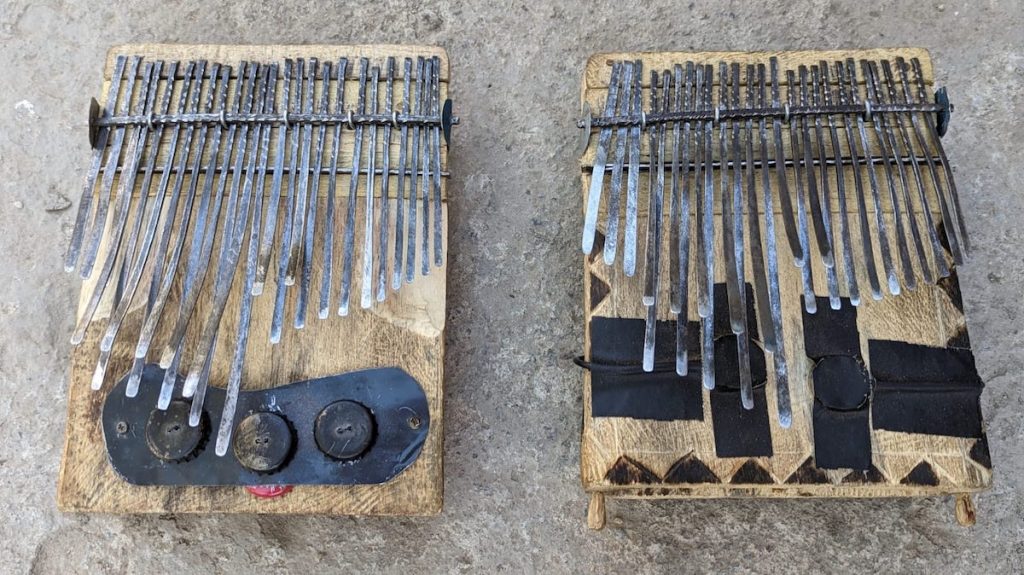(this post is for social media, please excuse the redundancy)
Most of us probably have seen the “Spinning Dancer”, a bistable optical illusion that became an internet classic. Does the dancer turn left or right? Your brain decides, the animation is always the same.

What if I told you that there is music which works the same way? Enter matepe, a traditional instrument and music culture from Northeast Zimbabwe. Many African drum rhythms already take advantage of the fact that they can be heard from different perspectives, depending on where in the cycle you anchor your sense of downbeat.
Matepe/mbira music extends this to the dimension of harmony. Depending on your point of view, you may hear a different tonal center and different progressions – a multi-stable musical illusion! Ethnomusicologist Andrew Tracey aptly named this phenomenon “kaleidophony” in his 1970 article about matepe.

So it can happen again and again that you don’t recognise a piece, even though you’ve been knowing it for years. And then suddenly your perception flips to the familiar, with no way of getting back to what you’ve heard before.
But just talking about it would be as boring as just describing the dancer in words. That’s why I made a video that juxtaposes at least two perspectives of the same matepe piece (the progression allows for several more):
I don’t know of any other music that exploits this and other psychoacoustic phenomena as cunningly as matepe, other types of mbira included. Classical minimal music of Western composers moves on the same terrain, but only scratches the surface in comparison.
Unfortunately, like many African traditions, matepe music is disappearing. There is only a good handful of master musicians left in the country, and only two seasoned matepe makers. The instrument is very sophisticated, its playing technique complex and difficult to learn. Many people in the urban centers prefer simplified and westernised versions of traditional music, and the instrument originates from marginalised ethnic groups.
I’m currently working on a cultural preservation project for Matepe music in Zimbabwe, funded by the Federal Foreign Office (Auswärtiges Amt) and supported by the German Embassy in Harare. More details on our project blog: matepe.org

Leave a Reply